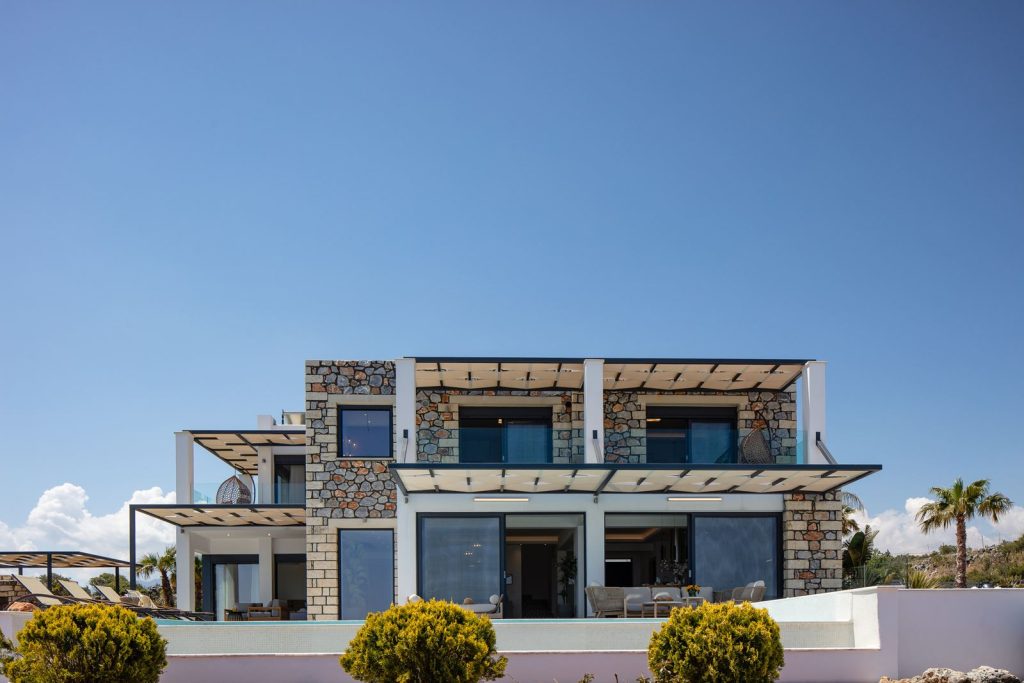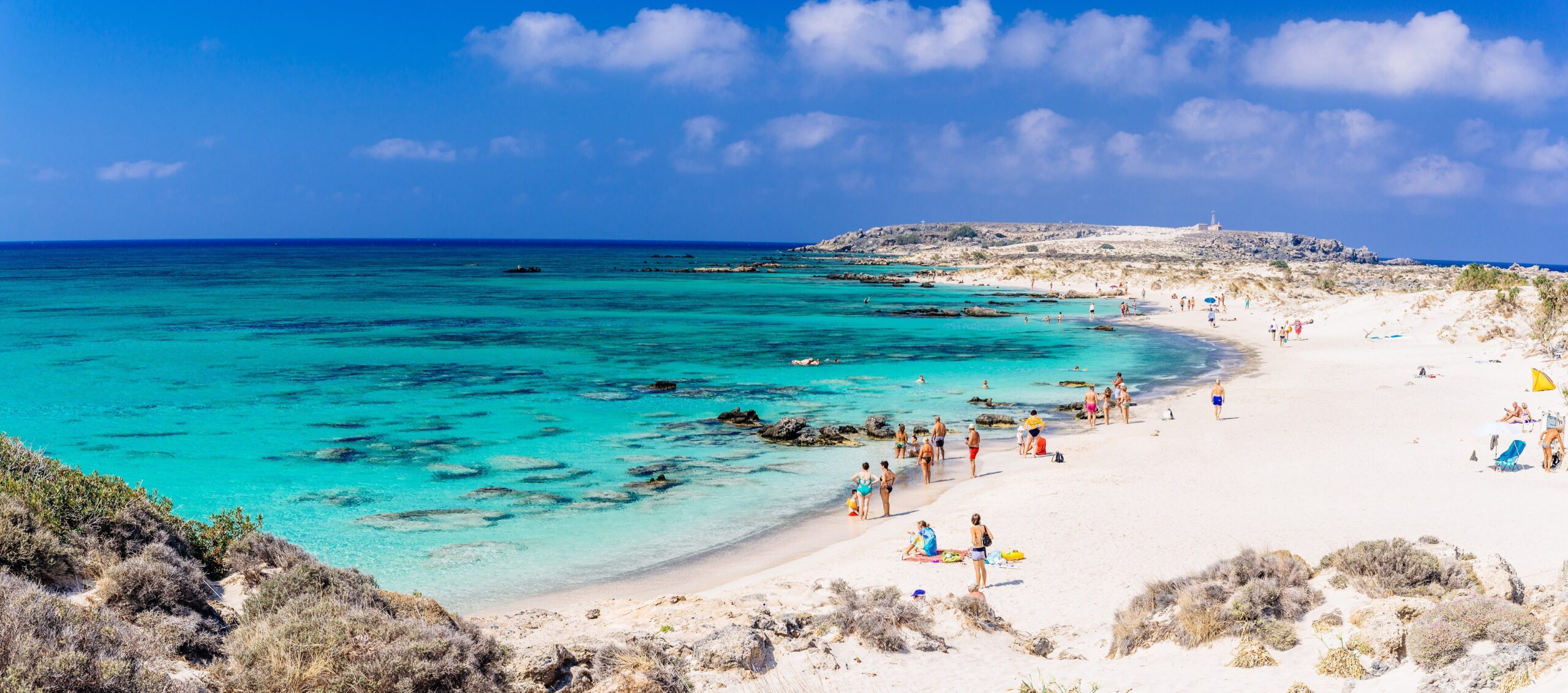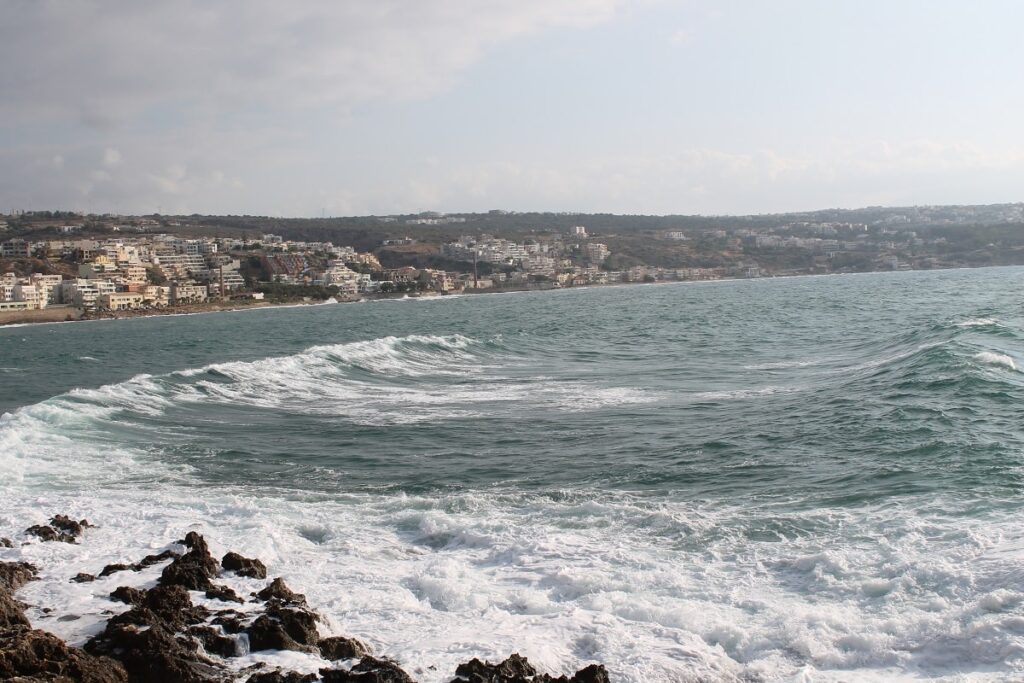Best Time to Visit Crete: Insights for Optimal Travel Dates
Deciding on the best time to visit Crete is essential to make the most of your trip to this picturesque Greek island. Crete, the largest of the Greek islands, offers a diverse range of activities and experiences, from exploring ancient ruins and experiencing vibrant cultural festivals to relaxing on its renowned beaches. While the island welcomes visitors throughout the year, certain times may better suit your preferences for weather, crowd levels, and local events.
The ideal time to explore Crete typically falls within the shoulder seasons, from mid-May to June and from September to October. During these months, the weather is warm yet comfortable, perfect for outdoor activities and sightseeing without the peak summer crowds. Travelers who prefer hotter conditions and a lively atmosphere might enjoy the island during the summer months, whereas those looking for a tranquil retreat may find the quieter off-season, which also offers the benefit of lower accommodation rates, to their liking.
Key Takeaways
- Shoulder seasons offer a balance of pleasant weather and thinner crowds.
- Summer provides peak warmth and a vibrant atmosphere for visitors.
- Off-season travel is ideal for quiet exploration and budget-friendly options.
Overview of Crete
Crete, the largest of the Greek islands, is nestled at the southern edge of the Aegean Sea, a part of the broader Mediterranean Sea. This enchanting island promises you a rich tapestry of landscapes, from rugged mountains and deep gorges to golden beaches that stretch for miles.
Cities and Villages: When you explore Crete, you’ll discover vibrant cities and quaint villages. Each city boasts a unique blend of modern amenities and historical sites, while the small villages offer a glimpse into the slower, traditional Cretan way of life.
Culinary Delights: Cretan cuisine is renowned for its flavors and nutritional benefits, embracing the essence of the Mediterranean diet. Your taste buds will savor local dishes in the many restaurants and tavernas. Local specialties often include olive oil, herbs, cheese, and fresh produce. Not to be missed is “raki,” a traditional Cretan spirit, typically served after meals.
Natural Beauty: The island’s diverse natural beauty is perfect for outdoor activities. You can hike through Samaria Gorge or enjoy the unique pink sand of Elafonissi Beach.
Cultural Riches: As for culture, Crete is steeped in history with its Minoan palaces, Byzantine churches, and Venetian fortresses, offering you a multitude of authentic experiences.
Food and Drink:
- Olive Oil: Used in many dishes, adding flavor and health benefits.
- Cheese: From the mild “myzithra” to the pungent “graviera,” cheese is an integral part of the diet.
- Herbs: Wild herbs like oregano and thyme are culinary staples.
Remember, while Crete’s allure is timeless, visiting during the spring or early autumn can enhance your experience by providing more comfortable temperatures and smaller crowds.
Best Times to Visit Crete
Selecting the right time to visit Crete depends on your preferences for weather, crowds, and local events. Whether you seek the buzz of peak tourist season or the tranquility of the island’s off-peak periods, you’ll find Crete’s diverse seasons offer a range of experiences.
By Season
- Spring (March to May): Enjoy mild temperatures and blooming wildflowers. Tourist facilities begin to reopen, especially towards late spring.
- Summer (June to August): The warmest weather and sunshine are abundant, ideal for beach activities and outdoor dining.
- Fall (September to October): The temperatures begin to moderate, and the sea remains warm, perfect for swimming with fewer crowds.
- Winter (November to February): Expect cooler, rainy weather, with some sunny days. Many hotels and tourist spots close, but it’s ideal for uncrowded sightseeing.
Month-by-Month Breakdown
- January & February: Cooler and rainy, fewer tourists. Limited accommodation availability.
- March: Beginning of mild weather, an increase in tourist activity.
- April: Good for hiking and sightseeing, some warm days allow for beach visits.
- May: Warmer waters, ideal for starting the beach season, with blooming landscapes.
- June to August: Sunny and hot, the best time for a classic beach holiday.
- September & October: Warm weather continues, and water temperatures remain high, ideal for enjoying the outdoors with decreasing crowds.
- November & December: Cooler temperatures return, with increased rainfall.
Tourist Seasons
- High Season (June to August): Expect the highest prices and biggest crowds, especially in popular areas. Book hotels and rooms early.
- Shoulder Seasons (May and September to October): Enjoy a balance of good weather and moderate tourist numbers.
- Low/Off-Season (November to April): Best for budget travel due to lower prices. Some services and accommodations may be limited.
Special Events and Festivals
- Carnival Season (February to March): Experience local traditions and festivities.
- Wine Harvest (September to October): Participate in wine tastings and vineyard tours during the grape harvest.
- Religious Festivals (Easter and Assumption of Mary): Join in on vibrant local celebrations with feasts and processions.
By planning your visit around these times, you can optimize your experience on the island, whether you’re looking for the vibrant energy of the high season or the calm of the quieter months.
Weather Considerations
In planning your trip to Crete, considering the island’s seasonal weather patterns will ensure a comfortable visit. The weather can vary significantly from the sizzling summer months to the cooler and wetter winter season.
Summer Heat and Sun
During the summer, especially in July and August, you’ll experience the peak of Crete’s heat. Temperatures often soar above 30°C (86°F), appealing if you’re after sunbathing or swimming in the sea. The heat is countered by the Meltemi, a northerly wind providing a welcoming breeze. Keep in mind that these months are also the busiest, as they coincide with European holiday periods.
- July: Average High: 29°C (84°F), Average Low: 21°C (70°F)
- August: Average High: 29°C (84°F), Average Low: 21°C (70°F)
Tips for the summer:
- Stay hydrated and wear sunscreen.
- Plan activities like hiking in the early morning or late afternoon to avoid the midday heat.
Winter Climate
Winter in Crete, encompassing December, January, and February, presents a different atmosphere — the temperature drops, and it becomes quite rainy and wet, though it’s typically milder when compared to northern Europe.
- December: Average High: 16°C (61°F), Average Low: 9°C (48°F)
- January: Average High: 15°C (59°F), Average Low: 8°C (46°F)
- February: Average High: 15°C (59°F), Average Low: 8°C (46°F)
While you might encounter rain, the weather is generally moderate, creating a pleasant environment for exploring the island’s culture and nature without the sweltering heat.
Tips for the winter:
- Carry a waterproof jacket.
- Take advantage of the lower tourist numbers to visit popular sites.
Exploring Crete’s Highlights
Crete, with its rich historical tapestry and stunning natural landscapes, offers an immersive journey through time and beauty. Venturing through this Greek island, you will discover ancient ruins, pristine beaches, and thrilling outdoor adventures.
Historical Sites and Museums
Knossos: Often topping the itinerary, the Palace of Knossos near Heraklion is a must-visit. Wander through a complex of ancient Minoan ruins, and allow yourself to be transported to a thriving Bronze Age civilization. Heraklion Archaeological Museum: Complementing your visit to Knossos, this museum showcases an extensive collection of Minoan art and artifacts, providing deeper insight into the island’s ancient history.
Phaistos: Another notable archaeological site, Phaistos reveals a palace complex offering a different perspective on Minoan life. Nearby, the Arkadi Monastery marks a poignant chapter in Cretan resistance against Ottoman rule, the church and museum within relay stories of heroism and tragedy.
Natural Attractions
Samaria Gorge: Lace up your hiking boots to traverse Europe’s longest gorge, a pathway through the rugged White Mountains. Lush with wildflowers in spring, its winding trails present the natural beauty of Crete at its finest.
Beaches: For a swim or sunbathing, the pink sands of Elafonissi and the exotic Balos Lagoon are paradisiacal spots.
Vai Beach: Known for its unique palm forest, Vai Beach offers a tropical experience, while the serene waters of Preveli invite you for a refreshing dip with a riverside palm grove as a backdrop.
Outdoor Activities
Hiking: Crete’s diverse terrain is a hiker’s paradise. The White Mountains challenge experienced trekkers, while the pathways of the E4 European long-distance path offer a variety of scenic walks for all levels.
Water Sports: Marathi, with its clear calm waters, is perfect for snorkeling and swimming. Thrill-seekers will find a plethora of water sports available along the coast, from windsurfing at Chania’s beaches to kitesurfing in the open waters around the island.
Each step you take in Crete, whether through ancient corridors or along natural trails, invites you to engage with history and revel in the outdoors.
Travel Considerations
When planning your trip to Crete, considering how you’ll navigate the island, where you’ll stay, and what local experiences to seek out are critical to crafting a memorable visit.
Transportation and Accessibility
Flights: Crete is serviced by two main airports, Heraklion Airport (HER) and Chania Airport (CHQ), with direct flights from Athens and international destinations. During peak season, book your flight well in advance to secure better rates.
Getting Around: Upon arrival, you have a variety of transportation options. Renting a car provides flexibility for exploring Crete’s mountain villages and remote beaches. Public buses connect major towns like Heraklio, Chania, and Rethymno and are a budget-friendly choice for sightseeing.
Accommodation and Dining
Hotels and Resorts: Accommodations in Crete range from luxury resorts to family-run hotels. Early booking is advisable, especially from mid-May to June and September to October, when the weather is pleasant and the island is less crowded.
Villas and Holiday Rentals: Villa holiday rentals offer an unparalleled blend of luxury, privacy, and authentic local charm. These villas are often situated in scenic locations, ranging from serene beachfront properties to tranquil hillside retreats, providing stunning views of the Mediterranean Sea or the island’s lush landscapes. Travelers can enjoy spacious living areas, private pools, and modern amenities that cater to both relaxation and entertainment. Many villas are designed with traditional Cretan architecture, incorporating local materials and design elements that reflect the island’s rich cultural heritage.
To secure the best villas at competitive rates, early booking is highly recommended, especially for the peak summer months of June to August, when demand is at its highest. The shoulder seasons of late spring (April to June) and early autumn (September to October) are also ideal times to visit Crete, offering pleasant weather, fewer crowds, and often lower rental prices. Booking your villa several months in advance during these periods can help you find the perfect accommodation that fits your preferences and budget. Staying in a villa allows visitors to experience the island at their own pace, with the flexibility to explore nearby villages, dine at local tavernas, and immerse themselves in the vibrant Cretan lifestyle. Whether you’re looking for a romantic getaway, a family vacation, or a retreat with friends, villa rentals in Crete offer a unique and memorable holiday experience.

View our Luxury Villas
Restaurants and Tavernas: For dining, you’ll find a multitude of options from upscale restaurants to traditional tavernas. Embrace the opportunity to try local dishes such as moussaka, freshly caught seafood, and sip on raki, an authentic Cretan spirit.
Local Experiences
Urban Exploration: Explore the old towns of Heraklio, Chania, and Rethymno, where you can wander through historic streets and enjoy the blend of Venetian and Ottoman architecture.
Village Culture: Delve into Cretan culture by visiting mountain villages. Take part in local traditions and enjoy the hospitality of the villagers, who may invite you to join a feast or share a glass of raki.
Authentic Experience: To fully immerse yourself, plan your visit around local festivals and cultural events for an authentic experience of Crete’s rich heritage and lively atmosphere.
Comparing Crete with Other Greek Destinations
When considering a trip to Greece, you’ll find that each destination offers a distinct experience. Crete, as the southernmost and largest island, contrasts with other Greek locales in terms of climate, size, and attractions.
Crete vs. Popular Islands
- Santorini: Renowned for its stunning sunsets and volcanic landscapes, Santorini is often busier due to its fame. Crete offers a more extended tourist season, thanks to its milder climate, providing a broader window for your travels.
|
Crete |
Santorini |
|
Longer tourist season |
Peak season April-Oct |
|
Larger in size |
Smaller, more intimate |
| Diverse attractions |
Signature landscapes |
Mykonos: Mykonos is synonymous with vibrant nightlife and luxury. In contrast, Crete offers a balance between lively urban centers and quiet, traditional villages, providing a more varied cultural experience.
|
Crete |
Mykonos |
|
Cultural diversity |
Focus on nightlife |
|
Various landscapes |
Beach-centric experiences |
| Broader activities |
Exclusive party scenes |
Mainland Greece
- Athens: As the capital city, Athens is steeped in historical significance with landmarks like the Acropolis. While Athens gives you ancient city vibes, Crete presents a mix of historical sites, such as the Palace of Knossos, alongside beautiful beaches and mountainous terrains.
|
Crete |
Athens |
|
Archaeological sites + nature |
Historical epicenter |
|
Diverse topography |
Urban experience |
| Combination of activities |
Classical attractions |
- Other Greek Islands: Compared to the archipelago’s numerous other islands, Crete’s size affords a wide variety of landscapes and activities. The Greek islands, each with their unique charm, often specialize in particular features, whether that’s beaches, cuisine, or architecture. Crete encapsulates many of these features together, giving you a comprehensive Grecian experience.
|
Crete |
Other Greek Islands |
|
Larger variety |
Specialized feature |
|
One-stop experience |
Explore multiple for diversity |
|
Less need to island-hop |
Island-hopping can be necessary |
Conclusion
When you’re deciding on the best time to visit Crete, consider the island’s seasonal offerings. June to August presents you with warm, sunny weather, perfect for beach activities and exploring the outdoors. If you’re looking to swim, the sea temperatures peak during August and early September, making it ideal for water sports as well.
For a more tranquil experience with moderate prices and fewer people, aim for the shoulder months of May or September. During May, Crete is vibrant with spring scents and blossoming wildflowers, while September still offers warm weather with the added benefit of fewer tourists.
Consider these points for your travel planning:
- Peak Season (June – August): Hot, sunny days suited for beaches and nightlife.
- Shoulder Months (May and September): Balanced weather, less crowded, good for hiking and cultural experiences.
- Cultural Events: Check local calendars for festivals and events that may enrich your visit.
Keep in mind the island’s regional differences; the north coast’s tourist hotspots contrast with the quieter south coast. Whatever your choice, Crete’s diverse landscapes and historical treasures promise a memorable stay.


